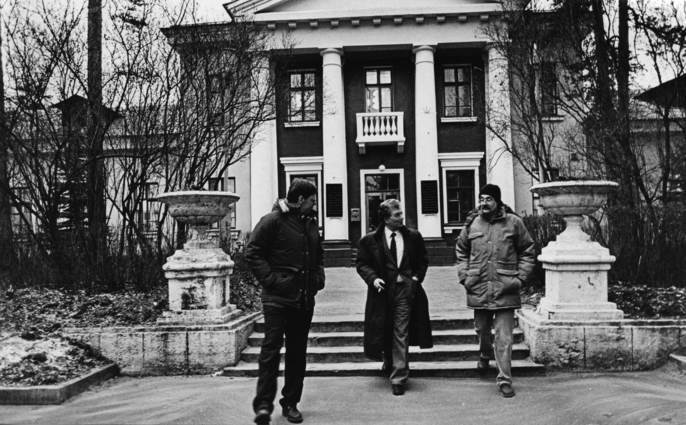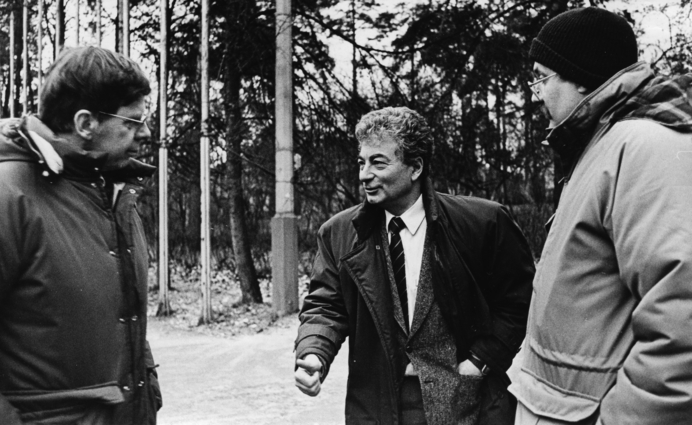Ken Moody's journey to the bottom of the periodic table
With his coif of wavy silver hair, Ken Moody appears to be an explorer traveling on an ocean looking for what may be hidden treasure.
Although Moody describes it in a different way. The uncharted “Island of Stability” is out there. And he’s on his way to conquer it.
Chemists have long predicted the existence of an “Island of Stability” at the outer bounds of the periodic table, where super-heavy elements live for milliseconds, minutes or even years amid a sea of oddly short-lived nuclei.
But for the last 30-plus years, Moody along with Russian collaborators has helped provide a glimpse of this elusive place, single-handedly producing the first long-lived versions of each element between 113 and 118 (with the exception of 117).
Known for his dogged determination and dry wit, Moody is modest about his career, his lifelong quest to discover the “Island of Stability” and the striking discoveries along the way.
But his work hasn’t gone unnoticed. The American Chemical Society Division of Nuclear Chemistry and Technology’s has awarded him the 2009 Glenn T. Seaborg award for his work in heavy elements and nuclear forensics. He will receive his award at the spring 2009 national meeting in Salt Lake City, UT.
“It’s a pretty impressive list of people who have been given this award,” Moody said. “But there aren’t too many old radiochemists left so they probably thought they had to give it to me. It’s a big deal. I’ve never looked for this kind of thing. It’s not my style”.
Not one to toot his own horn, yet always thinking about heavy elements, he said the honor “makes me a little uncomfortable…but maybe I’ll be able to milk this for some heavy element funding.”
And it’s only serendipitous that the person the award is named after just happened to be Moody’s graduate adviser at UC Berkeley.
Moody dove into radiochemistry and heavy element work almost on a whim. As an undergraduate who majored in physical chemistry, he was asked to interview five to six faculty members to decide on a graduate program. One of those faculty members just happened to be Seaborg.
“Here I am forcing myself on a Nobel laureate,” Moody said. “He dropped everything and walked me all over hill (at the Radiation Lab at UC Berkeley, which is now Lawrence Berkeley National Lab) and showed me all the accelerators. It was a super positive experience. I decided then and there that this was the guy I wanted to work for.”
Moody said working for a Nobel laureate (Seaborg won the Nobel prize in 1951 for discoveries in the chemistry of the transuranium elements – elements with atomic numbers greater than 92) at UC Berkeley was an incredible time.
“It was very cool,” he said. “Students could get time on an accelerator and you could design your own experiments. Seaborg’s knowledge was pretty encyclopedic. But if you needed to know how to separate anything from plutonium, he was your guy.”
And Seaborg was very interested in discovering superheavy elements. That’s where Moody comes in. His first experiment attempting to discover a new superheavy element was during his first week in grad school (1978) and it failed. But he continued.
He joined the Laboratory in 1985 and worked in the underground nuclear testing program until the test ban in 1992. After the test ban, he tapped into nuclear forensic analysis. At the same time, he was pursuing new superheavy elements.
In superheavy element work, Moody came into his own with the Livermore group. He soon started collaborating with the group in Dubna, Russia.
His first trip in 1989 was a memorable one. The Soviet Union was still considered a communist state (even though the Berlin Wall had been down). He and LLNL colleague Ron Lougheed were always accompanied to generally keep them out of trouble, Moody said.
But those early trips haven’t stopped Moody from visiting Dubna numerous times and in the process helping discover elements 113-118.
“When I was in graduate school, I had reason to read a lot of his papers for my own research,” said Dawn Shaughnessy, principal investigator for LLNL’s heavy elements group. “In the heavy element community, he was a very well known entity. I finally met him at an ACS meeting. At first, it was a little intimidating because he knows so much about everything. But over the years, I became less intimidated and he became more of a mentor to me.”
His nuclear forensics analysis work at the Lab also has won him accolades from colleagues.
“Ken is also the father of modern nuclear forensic analysis at Livermore, at least in its modern derivation,” said Patrick Grant, who has worked with Moody since they both started at the Lab in the mid-1980s. “Not at all a Lab prima donna, Ken also participated in several field-sampling collections with the Forensic Science Center over the years (most under less than ideal conditions). Working with Ken has always been very stimulating and rewarding, and there’s never any underlying agenda to screw up the project.”
Moody, Grant and the Lab’s Ian Hutcheon wrote a book together: “Nuclear Forensics Analysis,” that sells on Amazon.
When he’s not working 60 to 70 hours a week, Moody spends his time coaching high school soccer and lacrosse at Livermore High. He’s been coaching for close to 15 years and says “it’s a good sanity check.”
Married for 26 years with an adult son and daughter, he can be found starting his work day at 5 a.m. (He started this when his kids were in school so he could get home early enough to pick them up after school). Now working in the Weapons and Complex Integration Principal Associate Directorate, he prides himself on being known around the halls as the “curmudgeon.”
And at 53, Moody isn’t about to give up on his quest to reach the Island of Stability.
“You can be stubborn to the point of stupidity and eventually it pays off.”
Contact
Anne M. Stark[email protected]
925-422-9799
Related Links
Present at the creationA New Block on the Periodic Table
Livermore scientists team with Russia to discover element 118
Uncovering the secrets of actinides
Element team looks for 'magic number'
Island of Stability








